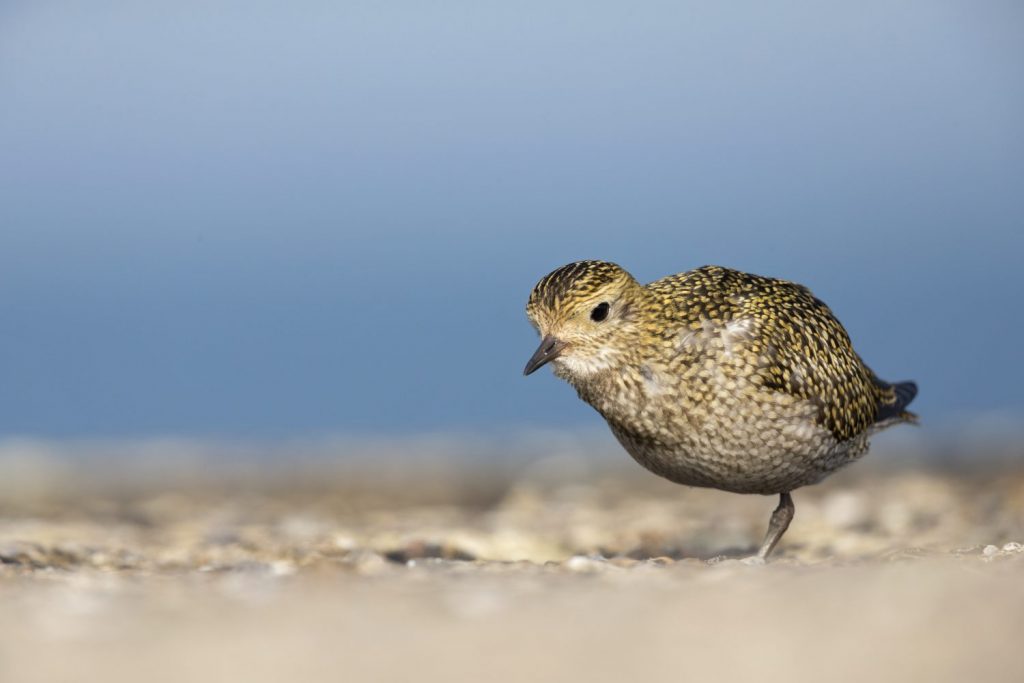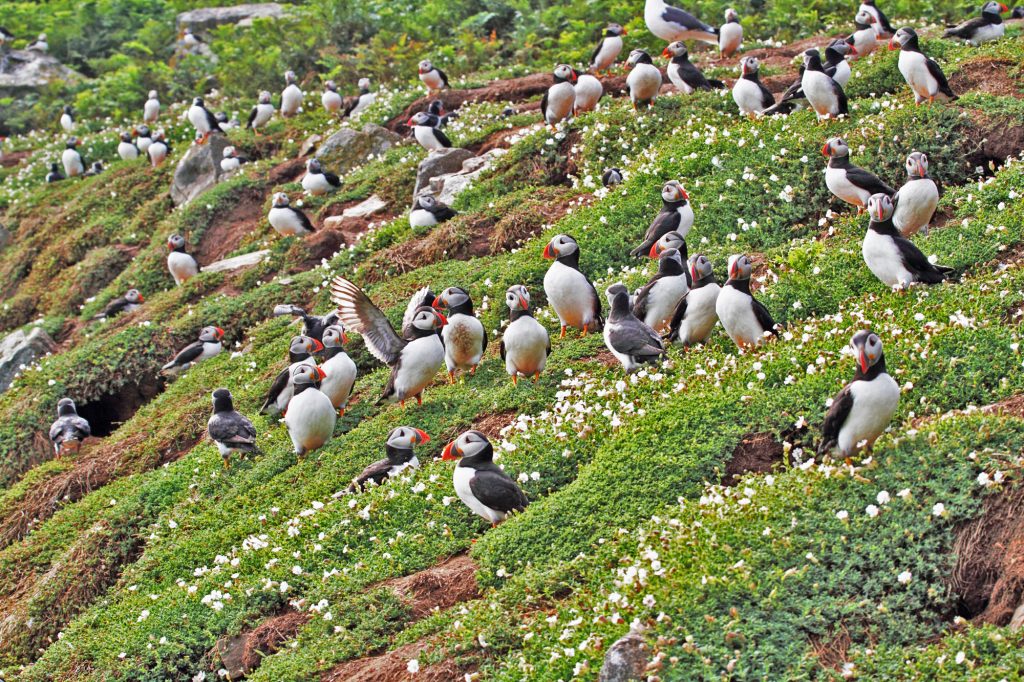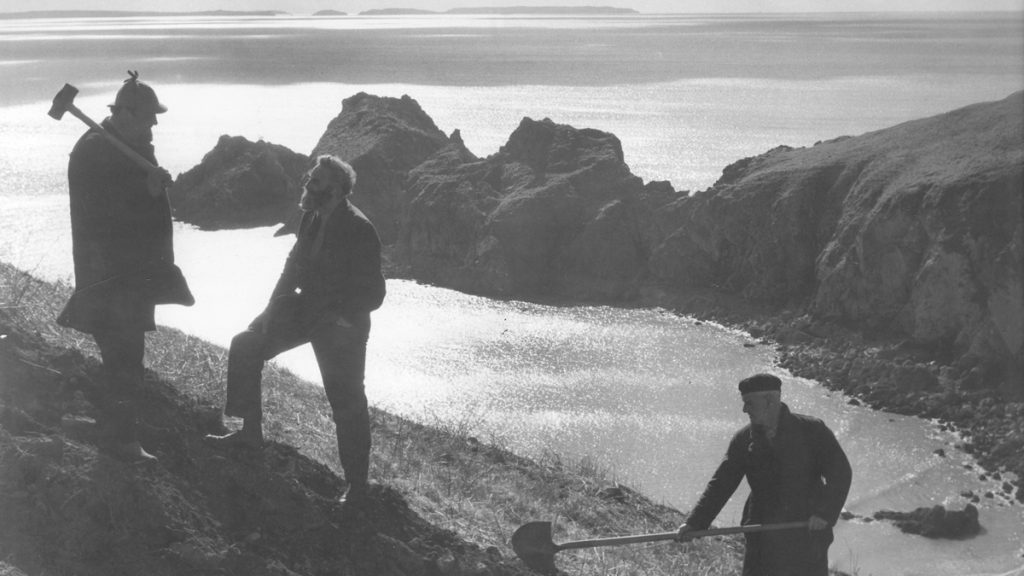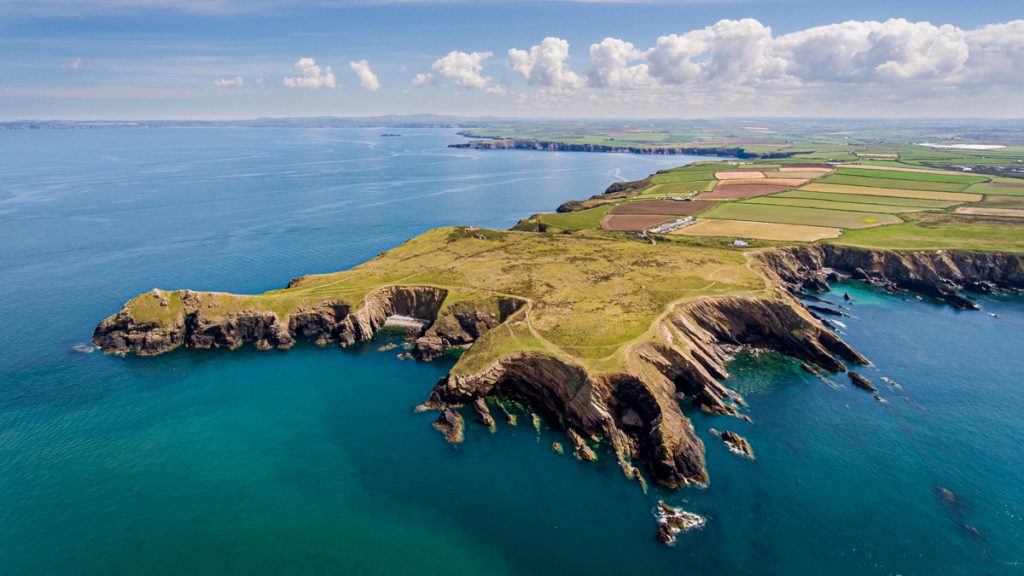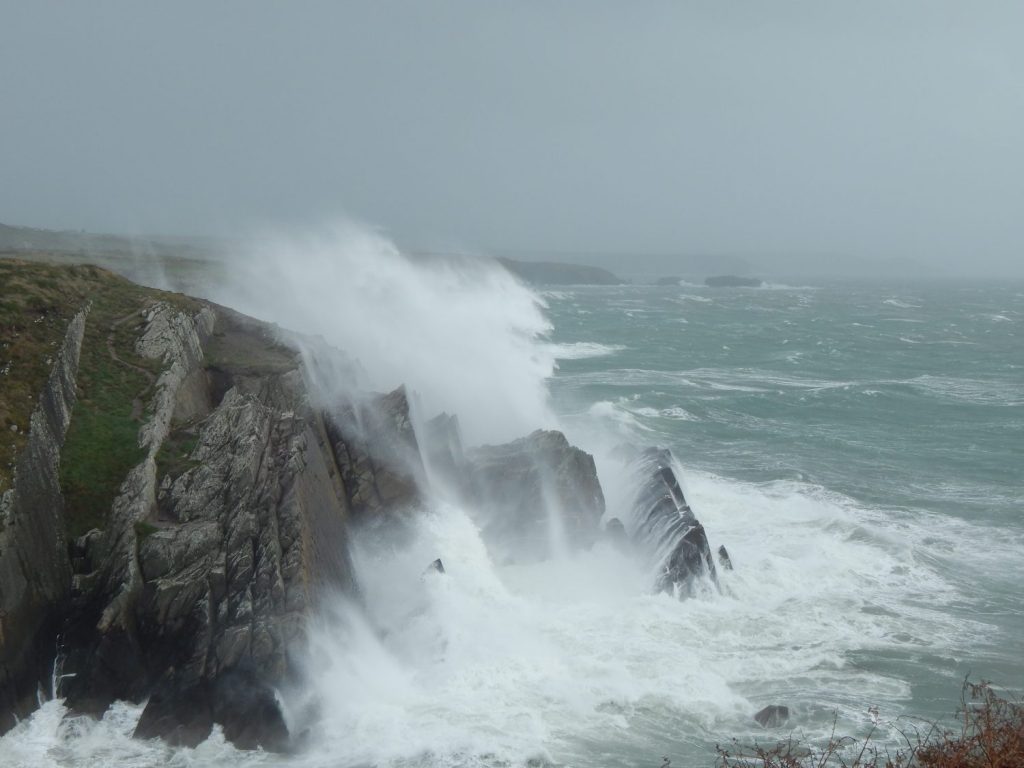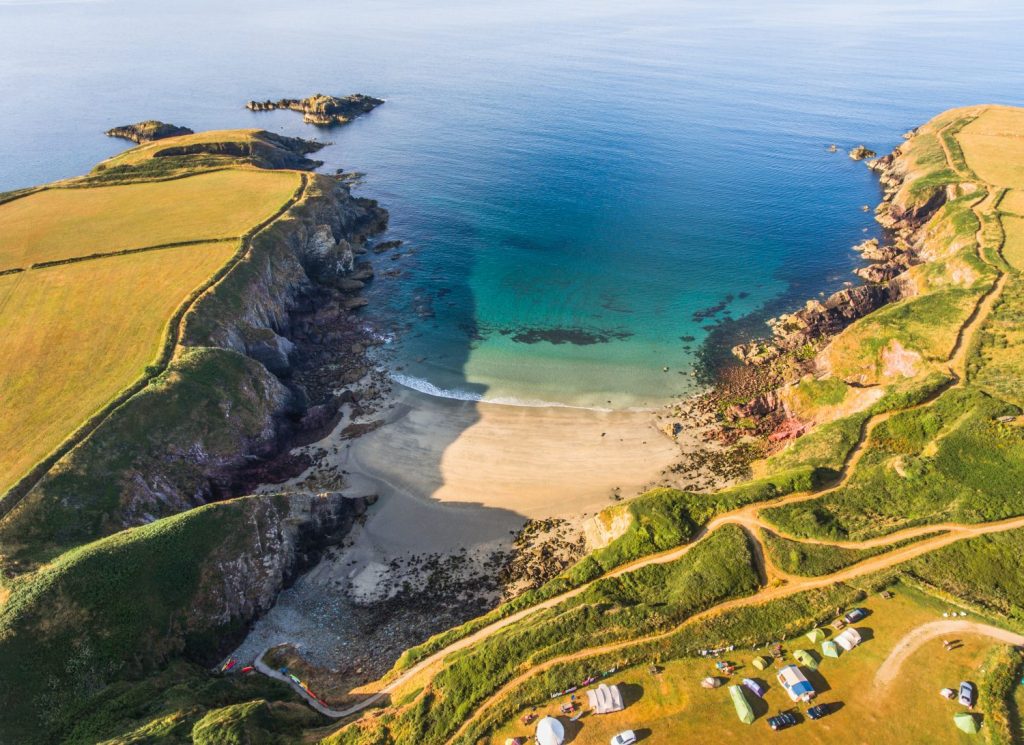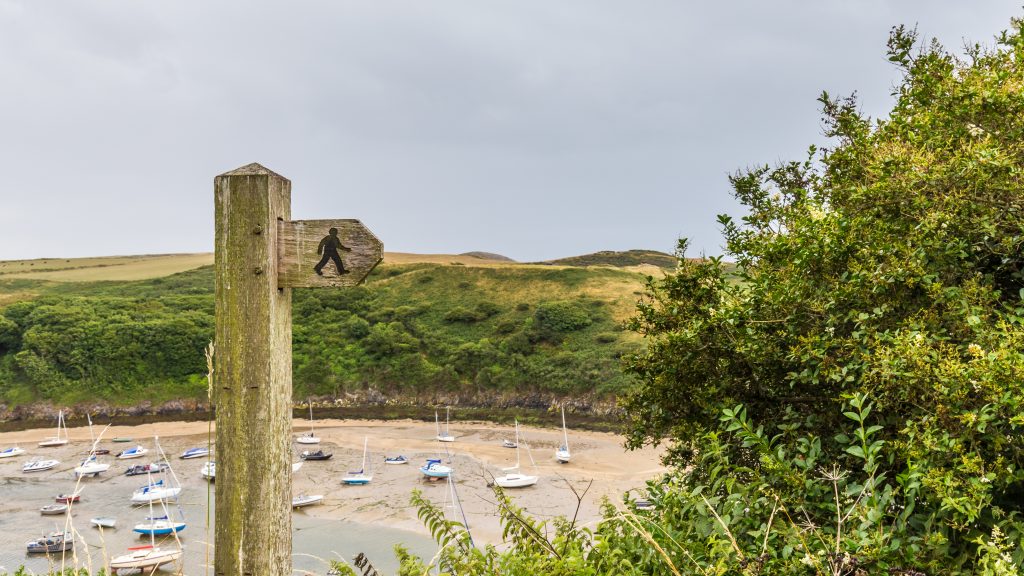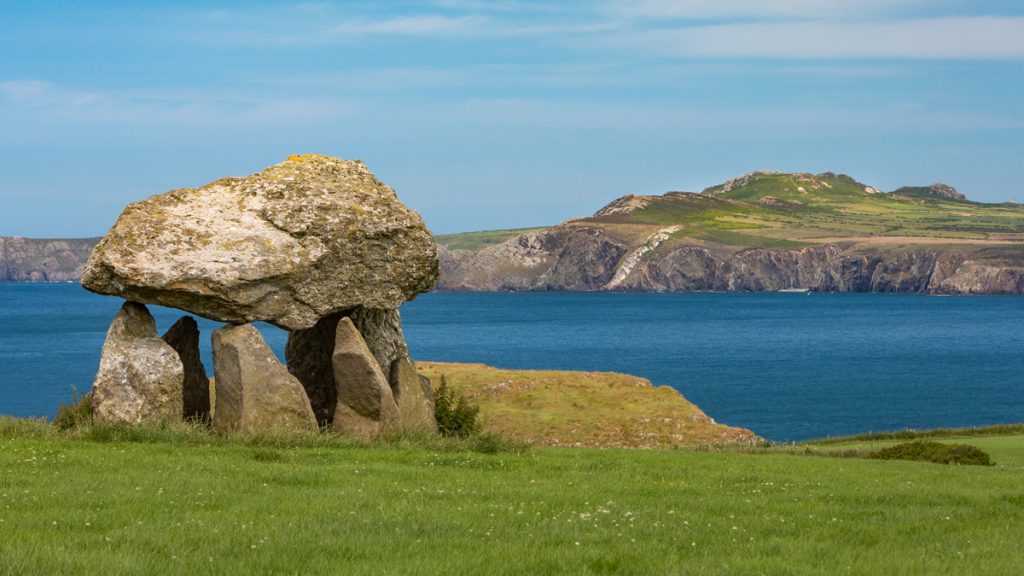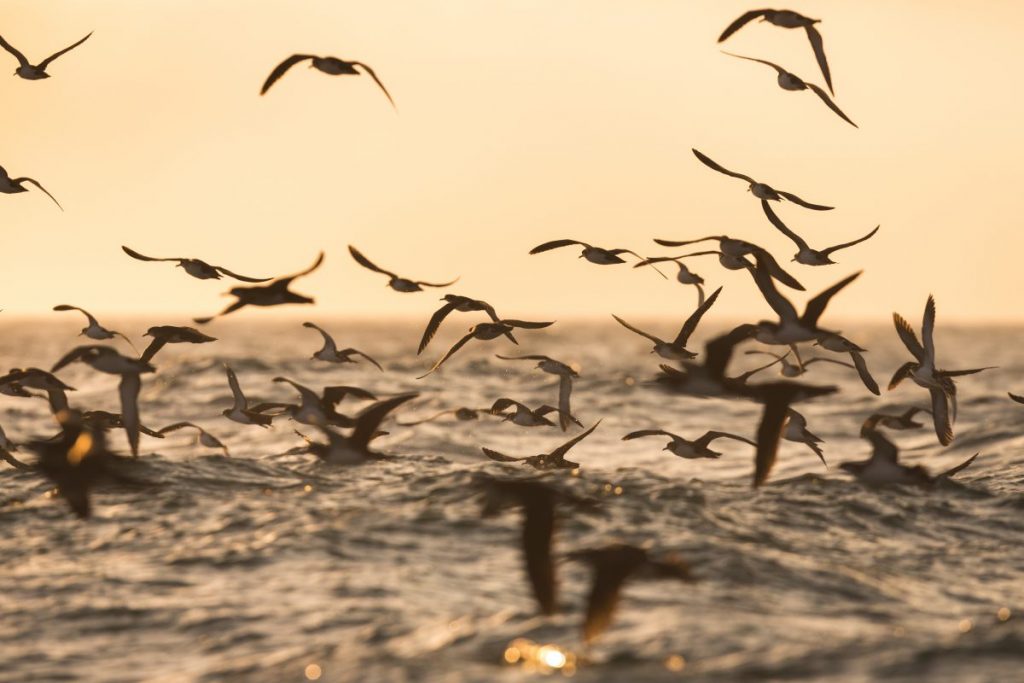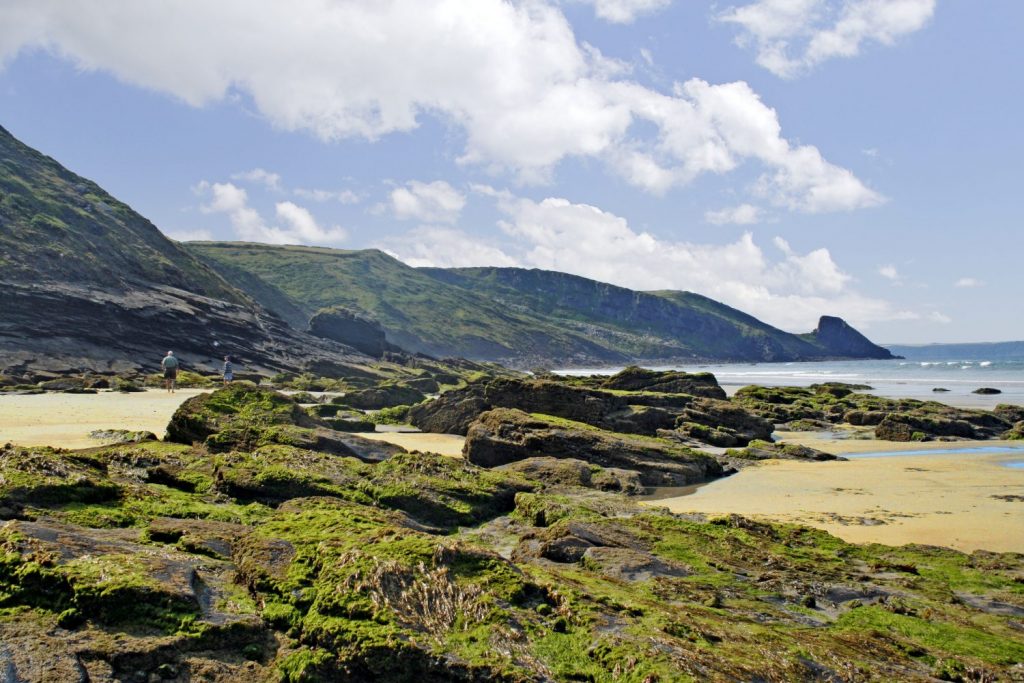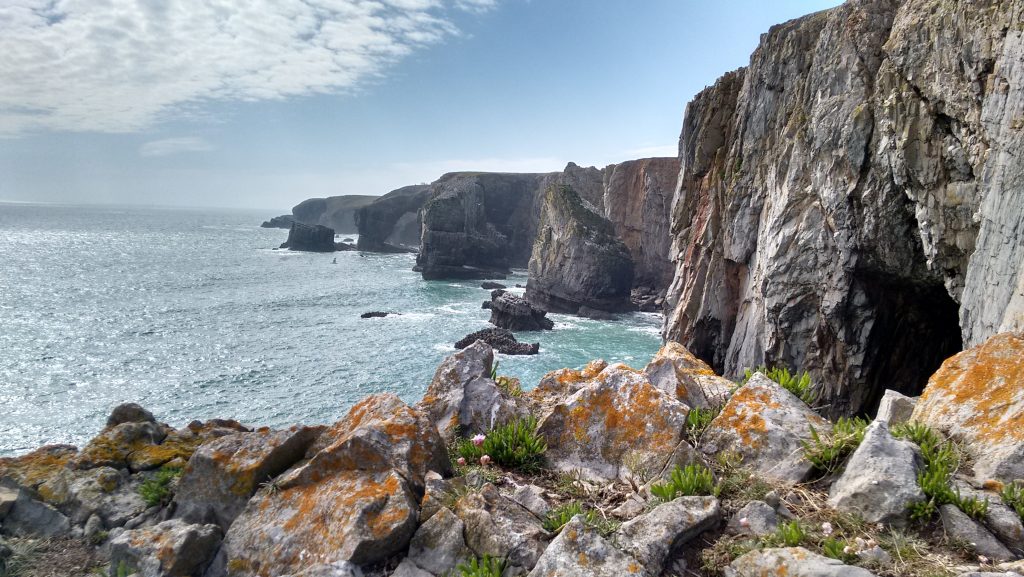While it is possible to visit one of Pembrokeshire’s seabird colonies to see the spectacle of puffins, guillemots and razorbills, it is less easy to plunge beneath the waves to catch a glimpse of the amazing marine wildlife that passes by our shores each year.
Pembrokeshire is a fortunate county, bathed by waters that have travelled from the Caribbean via the Gulf Stream. Those same currents bring nutrients to our shores, and these in turn attract creatures in search of food.
What lies beneath the surface? Pembrokeshire plays host to such marine visitors as basking sharks, the Portuguese man o’ war, minke whale and several species of dolphin.
Fishy visitors to Pembrokeshire
Pembrokeshire benefits from a mild maritime climate, brought by the Gulf Stream all the way from the West Indies. These same waters bring, during the summer, a concentration of plankton, fish and squid to the waters of Pembrokeshire. Such a gourmet banquet naturally attracts a few more exotic diners.
Certainly the largest creature to visit the waters of Pembrokeshire is the basking shark. This fish can grow to be as large and heavy as a double decker bus, but lives entirely on plankton, microscopic plants and animals. In summer it can be seen from the coast moving slowly through the water, either singly or in groups. Much about the life of this creature is unknown, but populations of basking shark do seem to move up the Irish Sea towards the Isle of Man.
Strangest amongst the ocean visitors is the sunfish. This fish looks almost like an enormous dinner plate, being round and flat. It swims upright with huge fins on top and underneath to steer with, or can be seen on its side at the surface, seemingly being warmed by the sun. Sunfish are regular visitors to Pembrokeshire during the summer, and can be seen from the coast or offshore islands.
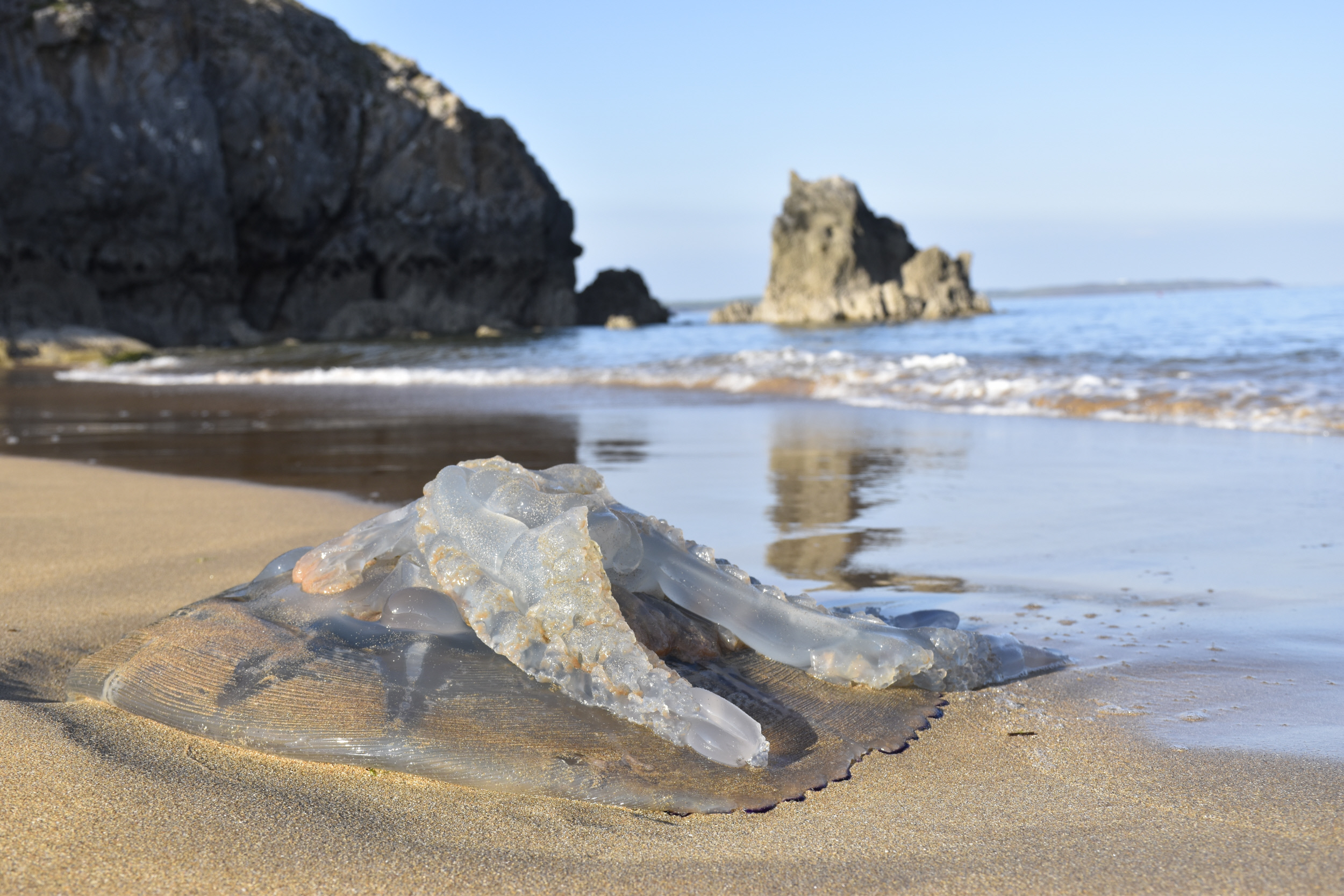
Jellyfish
Brought by the ocean currents that bathe Pembrokeshire in a mild maritime climate, jellyfish are regular visitors to the coast during the summer months. Five main species can be seen; the barrel jellyfish, the lion’s mane jellyfish, the moon jellyfish, the compass jellyfish and the blue jellyfish.
Moon jellyfish are a common species to see. They are the jellyfish most often seen washed up on beaches during the early summer; a round disk the size of a saucer or tea plate with four pale purple circles in the centre. They have a mild sting.
Larger, but completely harmless is the barrel jellyfish, one of the largest species found in the UK. This jellyfish also washes up dead on beaches, and is mostly found in South Pembrokeshire off the coast at Stackpole.
Following in the wake of the jellyfish are the creatures that feed on them. Thought of as creatures of tropical waters, turtles enjoy a dinner of jellyfish and are regular visitors to the Pembrokeshire coast. The most common turtle species seen in these waters is the leatherback turtle, a reptile that can grow to six feet in length. Other turtle visitors include the loggerhead, Kemp’s ridley and hawksbill turtle.
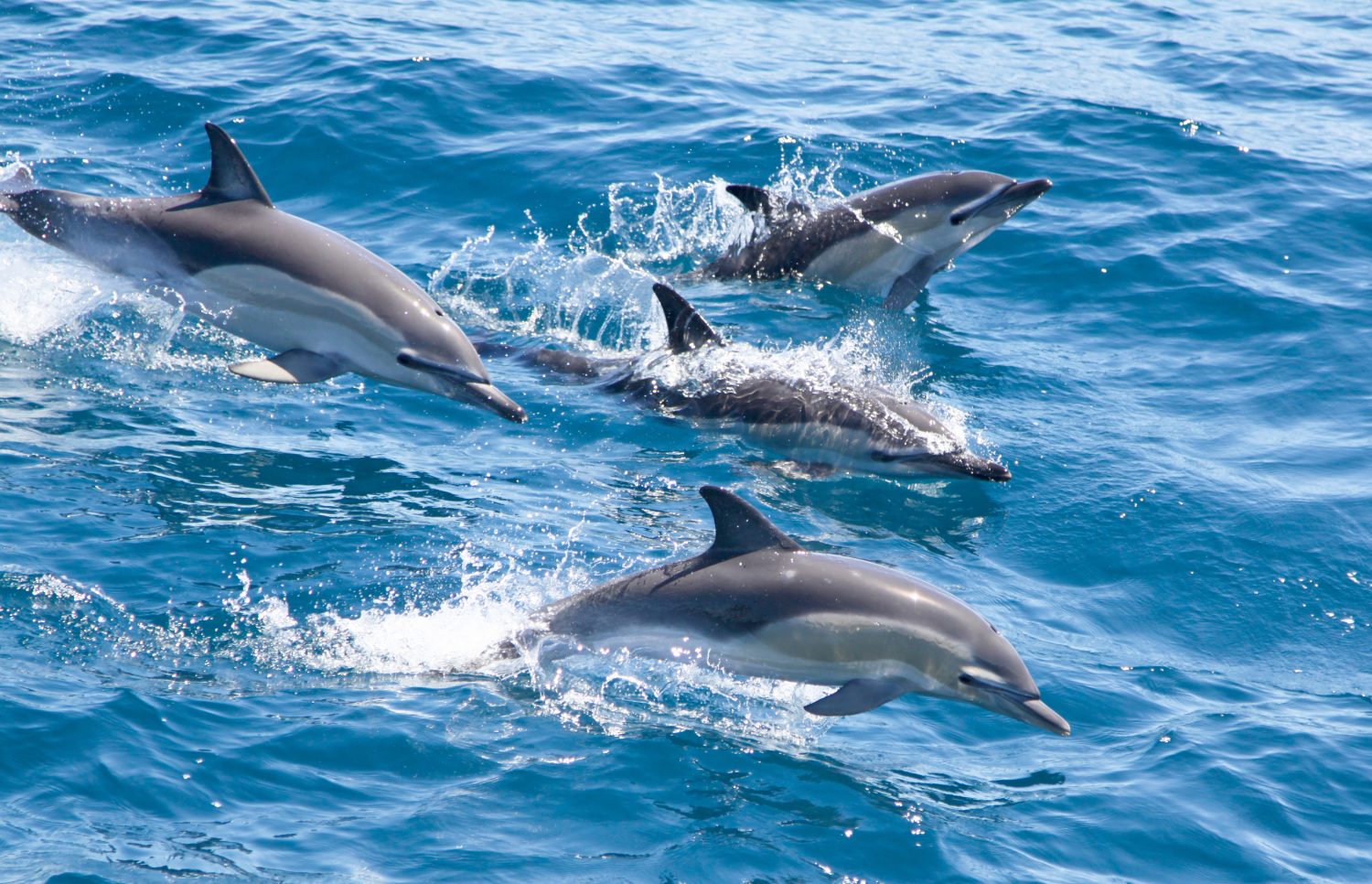
Whales and Dolphins
Not strictly seasonal visitors to the Pembrokeshire coast, there are a number of whales and dolphins that can be seen in the Irish Sea. Among those sighted regularly are harbour porpoise, common, bottlenose and Risso’s dolphin. Indeed the Irish Sea has one of the most important populations in the UK of bottlenose dolphins, and a significant concentration of harbour porpoise.
Why do these mammals use the Irish Sea? The waters around the Pembrokeshire coast are stirred by strong tidal currents which circulate nutrients, and make the waters rich in sea life, perfect feeding for dolphins and whales. During the summer, weather and sea conditions combine to draw into the Irish Sea plankton, fish and squid in large numbers. This attracts marine mammals that would normally only be seen in the open ocean. Species include minke whale, fin whale, pilot whale and short-beaked common dolphin.
What is the best way to see these creatures? Sightings are possible from the Coast Path, and the offshore islands. Boat trips are also available from St Justinian and Solva. The Sea Trust of South and West Wales uses the cross-channel ferry from Fishguard to monitor whales and dolphins.
